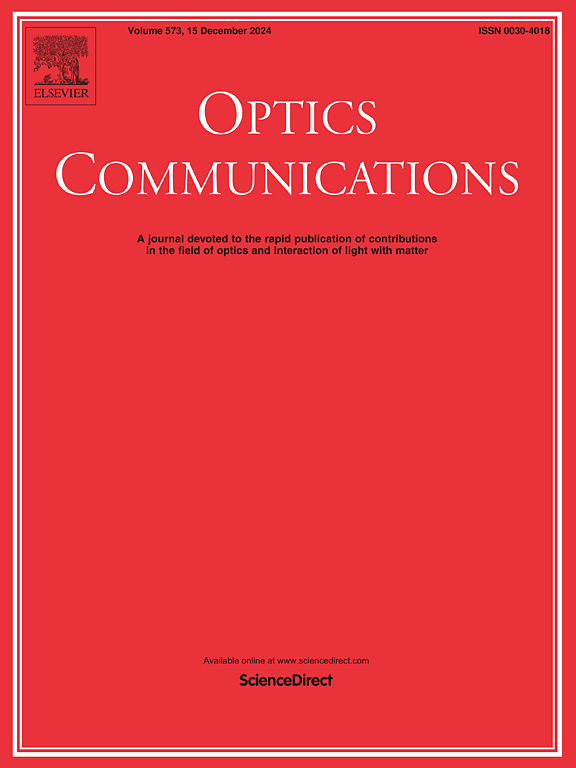Double stripe square enclosed SRR based triple band metamaterial absorber for materials variation and thickness sensing applications
IF 2.2
3区 物理与天体物理
Q2 OPTICS
引用次数: 0
Abstract
In this paper, a double stripe square enclosed SRR based triple band metamaterial sensor has been proposed to detect material properties and its thickness. A unique triple negative band metamaterial is designed for applications in microwave sensing described in this paper. It has a good absorption property almost equal to one and highly quality factor. The size for this sensor is 19.9 mm × 19.9 mm × 1.6 mm thickness of FR-4 substrate is used to produce the unit cell. The absorption of this sensor are 99.9 %, 99.9 % and 98.6 % for at frequencies 1.93 GHz, 3.55 GHz and 6.35 GHz respectively. This absorber has three absorption peak make it suitable to use in the triple band (L, S, and C). The copper back layer structure enhances the reflection coefficient, while the double stripe design aids in achieving triple band frequency. The frequency domain used in this study ranges from 1 to 7 GHz. The ADS software and CST results are used to confirm the reflection coefficient (S11) of this MTM absorber equivalent circuit. The resonance frequency and quality factor vary with oil because of its varying dielectric constant. The Q factors for these triple frequencies 1.93 GHz, 3.55 GHz, and 6.35 GHz are 1943.00, 1056.25, and 590.625 respectively. This unit cell structure receives a variety of frequencies that can be modified for sensing purposes. The sensor has sensitivity values of 0.454 %, 0.061 %, and 1.55 % for these frequencies. In addition, the FOM for 1.93 GHz, 3.55 GHz, and 6.35 GHz frequencies are 64.54, 915.47, and 822.12, respectively. The information demonstrates that the sensor's sensitivity is adequate to identify a range of oils. Since the proposed sensor has high Q-factor, sensitivity, absorption and excellent performance the recommended sensor can be used for distinguishing materials and thickness in various applications.
求助全文
约1分钟内获得全文
求助全文
来源期刊

Optics Communications
物理-光学
CiteScore
5.10
自引率
8.30%
发文量
681
审稿时长
38 days
期刊介绍:
Optics Communications invites original and timely contributions containing new results in various fields of optics and photonics. The journal considers theoretical and experimental research in areas ranging from the fundamental properties of light to technological applications. Topics covered include classical and quantum optics, optical physics and light-matter interactions, lasers, imaging, guided-wave optics and optical information processing. Manuscripts should offer clear evidence of novelty and significance. Papers concentrating on mathematical and computational issues, with limited connection to optics, are not suitable for publication in the Journal. Similarly, small technical advances, or papers concerned only with engineering applications or issues of materials science fall outside the journal scope.
 求助内容:
求助内容: 应助结果提醒方式:
应助结果提醒方式:


